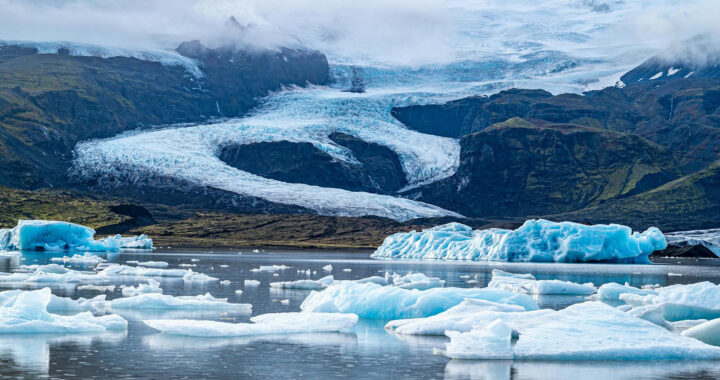The formation of ice caps is an exemption and not a rule. Earth, despite having icy polar regions today, actually prefers warmth, with most of its history spent in a warm and ice-free state. A team of scientists led by the University of Leeds investigated how Earth got its ice caps. Their findings, which were published on 14 February 2025 in Science Advances, concluded that the ice-covered state and the current existence of ice caps were only achieved through a lucky coincidence.
Findings: The Climate Regulation System of Earth Favors a Warm and Ice-Free World
Background
Earth experienced two prolonged icehouse periods during the Phanerozoic Eon that has spanned from about 541 million years ago to the present. The most recent icehouse period began about 34 million years ago and still persists today despite current shifts toward warmer states. However, throughout its long history, Earth was always warm.
Several ideas have been proposed to explain these known cold intervals in the history of Earth. These include decreased carbon dioxide emissions from volcanoes, increased carbon storage by forests, or the reaction of carbon dioxide with certain types of rocks or silicate weathering. It was unclear which factors were dominant.
The researchers developed a new advanced Earth System Model that integrated these cooling mechanisms for simulation purposes. Their primary goal was to replicate and understand why atmospheric carbon dioxide levels dropped enough to trigger icehouse climates. The model successfully replicated the geologic record of ice cap expansion.
Findings
Specific findings from the simulation showed that there was no single process that caused the ice ages. The formation of the ice caps was due to a rare coincidence of low volcanic activity that was combined with the right continental arrangements, such as high mountains and dispersed landmasses, that increased rainfall and carbon removal.
Furthermore, because icehouse periods were considered rare, this also suggests that the natural climate regulation system of Earth favors a warm and high carbon dioxide state rather than the cold conditions of previous ice ages and the current climate in cold regions. This is the reason why warmer greenhouse states were dominant.
“We think this general tendency towards a warm climate has helped prevent devastating ‘snowball Earth’ global glaciations, which have only occurred very rarely and have therefore helped life to continue to prosper,” explained lead author Andrew Meredith, who currently works in the School of Earth and Environment at the University of Leeds.
Implication
The findings are not meant to discredit the ongoing climate crisis and rising global temperature due to human activity. It actually provides a warning that the tendency of the Earth to favor warmer climates indicates that there is no guarantee that the planet will naturally return to pre-industrial cold conditions if human-driven global warming continues.
“We should do everything we can to preserve it, and we should be careful with assumptions that cold climates will return if we drive excessive warming before stopping emissions,” said co-author and research supervisor Benjamin Mills. “Over its long history, the Earth likes it hot, but our human society does not.”
Nevertheless, because Earth naturally gravitates toward a warmer state, the findings essentially indicate that the remaining ice coverages on the northernmost and southernmost hemispheres are not only rare but also very fragile. The study also highlights the need for immediate and aggressive actions to preserve current and preferable conditions.
FURTHER READING AND REFERENCE
- Merdith, A. S., Gernon, T. M., Maffre, P., Donnadieu, Y., Goddéris, Y., Longman, J., Müller, R. D., and Mills, B. J. W. 2025. “Phanerozoic Icehouse Climates as the Result of Multiple Solid-Earth Cooling Mechanisms. In Science Advances. 11(7). American Association for the Advancement of Science. DOI: 1126/sciadv.adm9798





